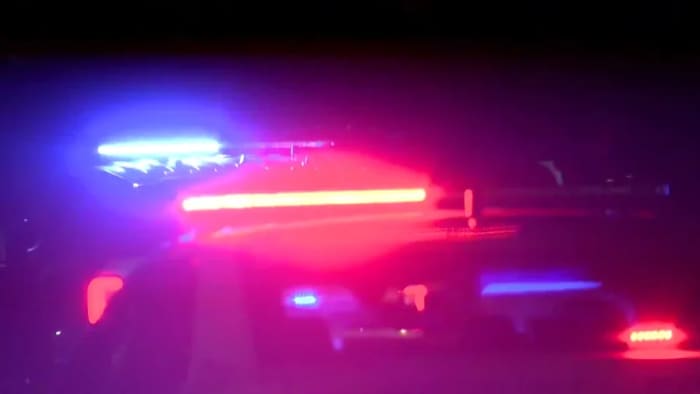Is Netflix’s ‘Griselda’ the real story of Miami’s ‘Godmother’ of cocaine?
The series, produced by the team behind “Narcos,” stars Sofía Vergara as the woman who came to epitomize Miami’s “cocaine cowboy” violence of the 1970s and ’80s — a time when the palm-fringed city became the homicide epicenter of the United States. The pulp semi-fiction compresses three years of Blanco’s exploits into an anti-hero-esque arc and transforms Vergara into Blanco through the heavy use of plastic prostheses and glitzy wardrobes.
“Authenticity is everything to us,” series creator Eric Newman told Tudum, the official Netflix site. “ … There’s no interview you’re going to get with Griselda Blanco that tells you what she was thinking and feeling. And so creating that in the most authentic way becomes essential.”
Though much of the series follows reality, creative licenses were taken — some of which make Vergara’s character appear slightly less brutal than the real-life Griselda. Here’s how the series stacks up to the historical record.
(If you haven’t watched “Griselda,” be warned: There are spoilers ahead.)
Who was Griselda Blanco and why was she nicknamed the ‘Black Widow’?
Before becoming one of the central figures in Miami’s drug wars, Blanco — born Feb. 15, 1943 — was raised in the slums of Medellín during one of the most brutal periods of Colombia’s history: a 10-year civil war known as “La Violencia.”
Throughout her life, Blanco amassed a billion-dollar empire and was alleged to have been involved in the deaths of more than 200 people, including multiple ex-husbands, the Miami Herald reported — prompting one of her nicknames. She also gained notoriety for popularizing drive-by motorcycle murders in Colombian gang disputes and for using undergarments with secret compartments to smuggle cocaine.
The series and reality begin to diverge when “Griselda” depicts Blanco fleeing to Miami after killing Alberto Bravo, her second husband. In real life, Blanco had already been working in the United States for years before Bravo’s death.
In the late ’60s, the couple set up a network of cocaine couriers who were outfitted with Blanco’s special smuggling bras and traveled between Colombia and New York. By 1975, the couple was on U.S. law enforcement’s radar. After New York officials filed charges against them that year, Blanco and Bravo fled back to Colombia.
However, Blanco continued making frequent trips to the United States, using disguises and fake passports. Bob Palombo, the Drug Enforcement Administration agent who eventually arrested her, even called her “a master of disguise.”
“She could change her appearance like a chameleon — gain 20 pounds, lose 30 pounds, change the color of her hair,” he told the South Florida Sun-Sentinel in 1989.
It’d be years before authorities tracked her to another state.
Blanco, who settled in Miami in 1978, was also known for her lavish lifestyle, her penchant for mob movies — “The Godfather” inspired her son’s name, Michael Corleone — and for having a dog named Hitler.
Did killings depicted in the series actually happen?
Yes, and they were just as gruesome.
The series features Blanco orchestrating what’s known as the Dadeland Mall Massacre of 1979, during which her henchmen shot her rival so many times that the man and his companion looked “like Swiss cheese,” a medical examiner said at the time.
She was also eventually charged in the killing of the 2-year-old son of Jesús “Chucho” Castro, one of her organization’s enforcers who had a falling out with Blanco’s son. The Miami police chief at the time said Blanco was not present when the boy was killed, “but she gave the orders and paid the hit men,” the Tampa Bay Times reported.
In the series, Vergara’s Blanco is at first remorseful and skittish at the idea of murder — only turning to violence to convince the male kingpins that she was not to be messed with. According to one of her enforcers, however, carnage “was something she enjoyed.”
“She liked to be at war,” Jorge “Rivi” Ayala told Maxim. “Every day she’d say, ‘We’ve got to get so-and-so.’” Officials investigating Blanco’s crimes said she was happy about the death of Castro’s son because “it would upset the father.”
How did her empire crumble?
In the show, Blanco flees to California to escape the wrath of rival drug lord Rafael Cardona Salazar, whose girlfriend dies in an accident while she and Blanco are high on cocaine. Blanco then calls the authorities on herself after learning Salazar is on the West Coast, in an effort to stave off his revenge.
That’s not what really happened. By 1984, officials had tracked Blanco to California, where she moved after creating too many enemies in Miami. After surveilling her for months, federal agents busted into her Irvine, Calif., home while she was reading the Bible, the Sun Sentinel reported. In 1985, she was sentenced to 15 years in prison for conspiracy to import cocaine.
However, Blanco allegedly continued conducting drug trades from behind bars through her boyfriend, a dealer who’d sent her a fan letter in 1991. Then in 1994, prosecutors, who’d enlisted Ayala as their star witness, charged her with three counts of murder and were seeking the death penalty.
But like the series shows, the murder case fell apart after Miami-Dade County state attorney’s office employees were caught having inappropriate relationships with Ayala.
Blanco reached a deal with federal authorities after the scandal. She pleaded guilty to the three murder charges and was sentenced to serve three concurrent 20-year sentences. Before serving the full sentences, she was deported to Colombia in 2004, where she lived in an exclusive gated community, according to Vice.
Eight years later, Blanco was at a butcher shop in Medellín when a man pulled up on a motorcycle and shot her twice, killing her using the same technique she was said to have popularized. She was 69.
What happened to her family?
Blanco’s three oldest sons — Dixon, Uber and Osvaldo Trujillo-Blanco — who were shown to have been murdered on the show suffered the same fate in real life, “purportedly in retribution for carnage she herself caused,” Miami New Times reported.
Blanco’s youngest, Michael Corleone Blanco, is still alive, but he’s not happy with “Griselda.”
In an interview with Fox News, he slammed the series as “disrespectful.” He and his wife are now suing Vergara and Netflix for the “unauthorized” use of the family’s likeness, claiming in a lawsuit that the streaming giant used information from private interviews without authorization.
Representatives for Netflix, Vergara and Newman, the “Griselda” creator, did not immediately respond to requests for comment from The Washington Post. However, Newman told Today that lawsuits like Michael Corleone’s “kind of comes with the territory,” adding: “I tend not to think much about them.”



